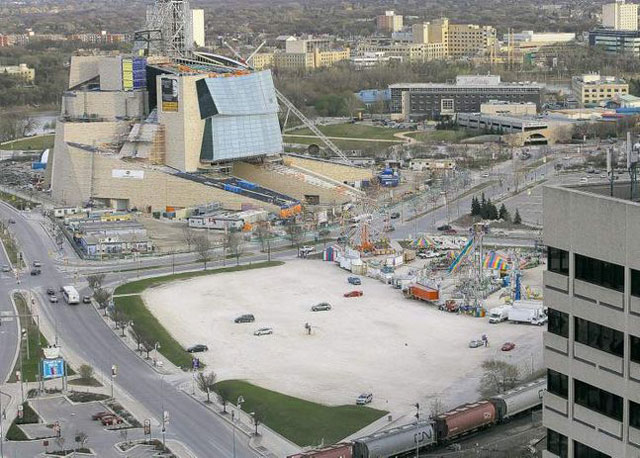
So... what now?
Over the past few months, Winnipeggers have been captivated by the most recent chapter in one of our city's great legends of modern folklore, the search for the ever-elusive "world-class Winnipeg water park."
Adjacent to The Forks, the location of the most recent water-park proposal created a wave of public opposition that caused Canalta Hotels to pack up its snorkel and swim fins and head back to Drumheller. With the pressure relieved, we now have the opportunity to step back and ask ourselves as a community, what is the best way forward for one of the most important pieces of real estate that we, the citizens of Winnipeg, collectively own?
Parcel Four, as it has come to be known, is a unique piece of property in the city. When The Forks was created in 1987, it was thought a new Provencher Bridge would connect to York Avenue, where the main entrance to The Forks exists today. To accommodate this future development, the land was partitioned from the rest of the site. When the new bridge was eventually built, the roads were maintained to the north, resulting in a large city-owned parcel of land within what is traditionally considered to be The Forks site.
In the following 25 years, The Forks North Portage Partnership (FNP) would transform its part of the site from an abandoned rail yard into one of the most important urban public spaces in Western Canada and a crown jewel of our city. FNP has achieved this success through extensive strategic planning and community-consultation initiatives. Because of its civic ownership, Parcel Four has been excluded from this planning process. The water-park development was negotiated by the city without public dialogue or identification of the long-term goals of the site, resulting in a surprise public announcement that contributed to the community backlash.
To avoid this in the future, and to ensure Parcel Four's development is compatible with the goals of the overall site, an appropriate strategy would be for the city to partner with FNP and allow the land to be included in The Forks' strategic master plan.
A well-designed master plan has taken on greater significance with the construction of the Canadian Museum for Human Rights. Parcel Four and the adjacent rail-side lands at The Forks hold the greatest potential to translate the urban and economic impact of the museum into a catalyst for growth at The Forks and throughout the downtown. FNP has said in its 10-year master plan it will explore the feasibility of a sustainable, mixed-use, residential and commercial development as a way to most effectively capitalize on this potential.
Successful reclamation of urban industrial land in cities across the world consistently incorporates mixed-use residential development as a key planning initiative. Cities such as Pittsburgh, Copenhagen, Bilbao and Toronto have all transformed their industrial waterfronts through the construction of cultural institutions, urban markets and public green space similar to what is seen at The Forks today. These amenities are then used as a magnet to attract residential development that completes the puzzle by injecting a vibrancy, security and economic stability to the area.
Without this permanent residential community at The Forks, the site remains primarily a drive-to destination that lacks the all-hours activity of many successful urban gathering places. As wonderful as it is, The Forks is a segregated island in the downtown that can be desolate during off-peak hours.
A residential population would provide a more consistent level of activity to The Forks at all times and would introduce new commercial opportunities to retailers who would not only be responding to visitors and tourists, but to the daily needs of the neighbourhood. Most vibrant public spaces have one significant feature in common: They serve dense residential populations that are able to activate the markets and outdoor spaces beyond sunny summer weekends.
The mixed-use development FNP envisions in its 10-year plan establishes an urban streetscape of retail storefronts, live-work units and landscaped green space that would create a new layer of animation at The Forks. A strong residential component would transform the site into a unique, thriving community with residents who work, live and play at The Forks and in its surrounding neighbourhoods, breaking down the barriers that currently divide the site from the rest of downtown.
Parcel Four and the adjacent rail-side lands are the last significant development properties at The Forks. Their strategic location across from the new museum represents a rare opportunity to inspire far-reaching, transformational growth that can be more valuable in the long term than the property-tax or building-permit revenues of the immediate site. The decisions made there will forever redefine the character of Winnipeg's most cherished public place. With careful planning, the conditions exist to create an active urban neighbourhood, solidifying The Forks' long-term viability and translating its success to the surrounding neighbourhoods of downtown Winnipeg.
Brent Bellamy is senior design architect for Number Ten Architectural Group. Email him at:
Republished from the Winnipeg Free Press print edition May 28, 2012 B5

